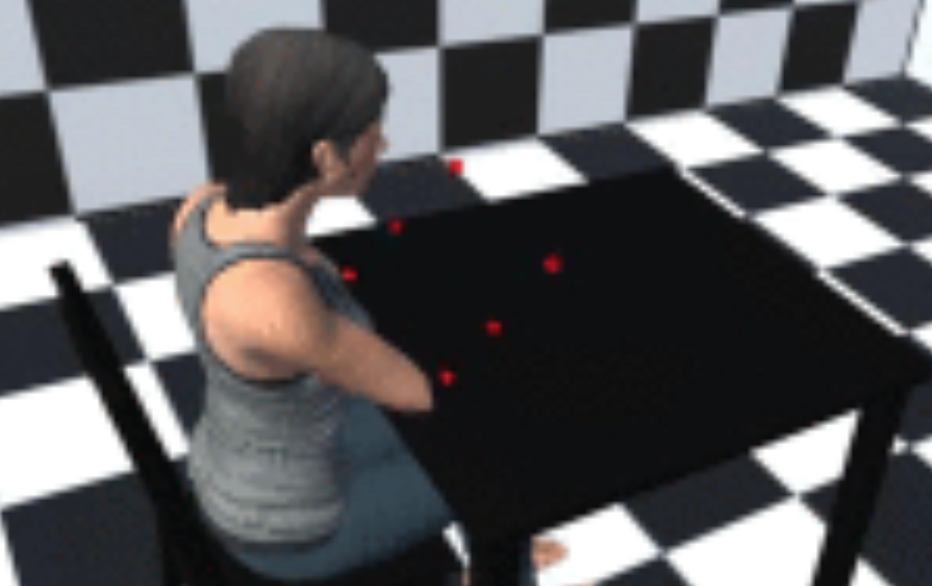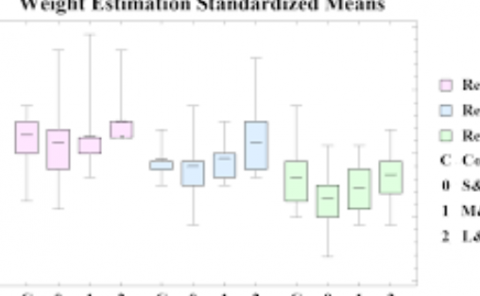From Embodiment of a Point-Light Display in Virtual Reality to Perception of One’s Own Movements
PubDate: Sep 2019
Teams: Univ. Grenoble Alpes
Writers: Marion Giroux;Julien Barra;Pierre-Alain Barraud;Christian Graff;Michel Guerraz
PDF: From Embodiment of a Point-Light Display in Virtual Reality to Perception of One’s Own Movements

Abstract
Humans can recognize living organisms and understand their actions solely on the basis of a small animated set of well-positioned points of light, i.e. by recognizing biological motion. Our aim was to determine whether this type of recognition and integration also occurs during the perception of one’s own movements. The participants (60 females) were immersed with a virtual reality headset in a virtual environment, either dark or illuminated, in which they could see a humanoid avatar from a first-person perspective. The avatar’s forearms were either realistic or represented by three points of light. Embodiment was successfully achieved through a 1-min period during which either the realistic or point-light avatar’s forearms faithfully reproduced voluntary flexion–extension movements. Then, the “virtual mirror paradigm” was used to evoke kinesthetic illusions. In this paradigm, a passive flexion–extension of the participant’s left arm was coupled with the movements of the avatar’s forearms. This combined visuo-proprioceptive stimulation, was compared with unimodal stimulation (either visual or proprioceptive stimulation only). We found that combined visuo-proprioceptive stimulation with realistic avatars evoked more vivid kinesthetic illusions of a moving right forearm than unimodal stimulations, regardless of whether the virtual environment was dark or illuminated. Kinesthetic illusions also occurred with point-light avatars, albeit less frequently and a little less intense, and only when the visual environment was optimal for slow motion detection of the point-light display (lit environment). We conclude that kinesthesia does not require visual access to an elaborate representation of a body segment. Access to biological movement can be sufficient.


